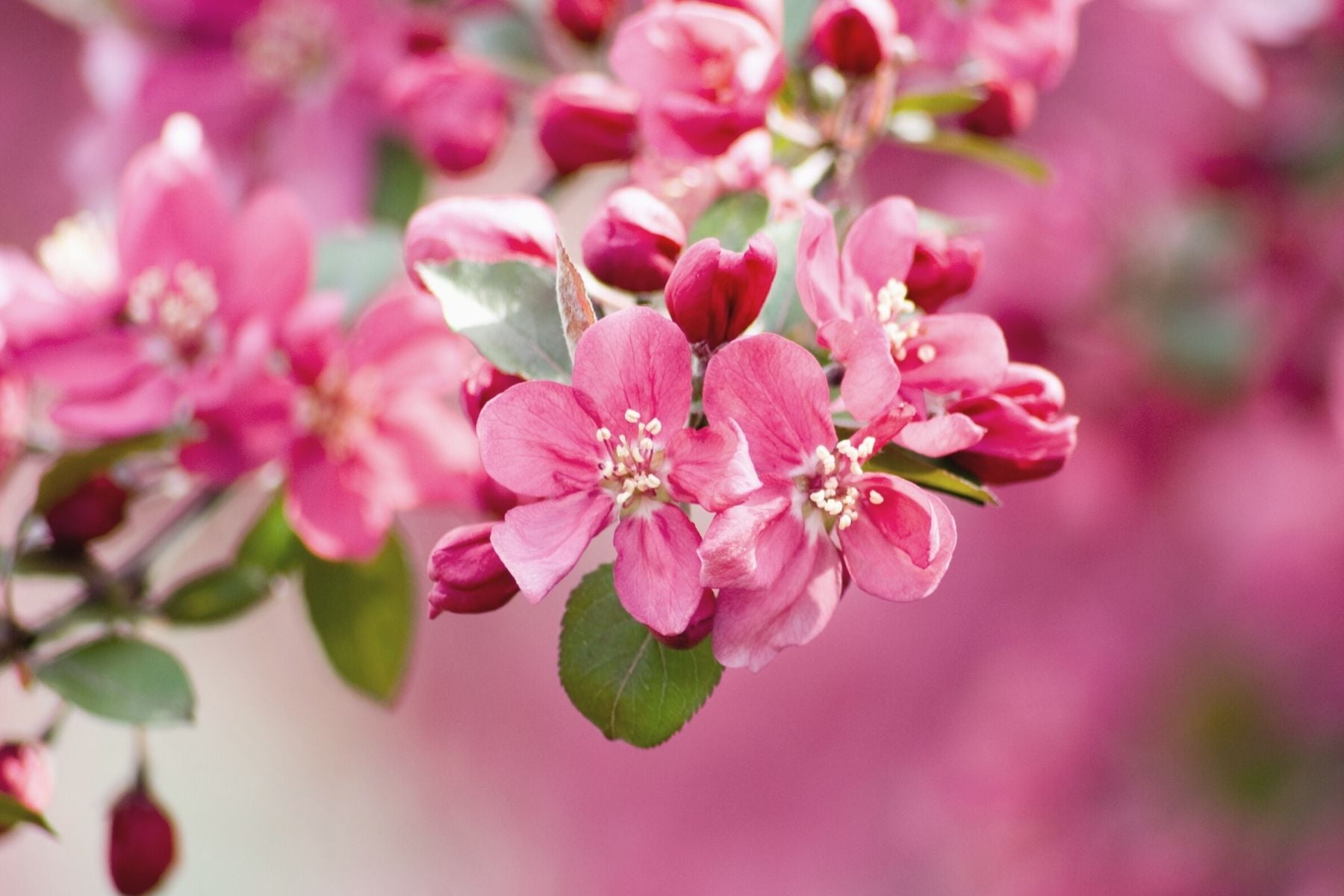Choosing the perfect tree for your yard comes with a lot of small decisions you need to carefully consider. What color flowers do you want it to blossom with? Do you want a fruit-bearing tree? How much space do you have for a specific kind of tree? All these questions and others will ultimately determine the right tree for you. But in our opinion, one of the best trees to consider that checks a lot of boxes is a flowering crabapple tree.
Flowering crabapple trees are more common than you might realize if you’re just getting into creating your own landscape. There are a ton of reasons that people choose crabapple trees for their yards. However, like with any large fruit-bearing tree, caring for one and ensuring it grows to its full maturity takes a little extra time and effort, as well as a good deal of patience on top of that. Follow along below as we walk you through how to grow and care for flowering crabapple trees so you can enjoy them on your property for many years to come.
Why Choose a Crabapple Tree?
Crabapple trees have plenty of benefits that make them an excellent choice for almost anyone. Here are some of the things that make our customers choose their crabapple trees and why they are so worth taking proper care of:
- Crabapple trees are very good at attracting pollinators. When they flower, crabapple trees provide a ton of available nectar for pollinators such as bees. You get a beautiful tree and you’re doing your part to save the bees at the same time!
- Crabapple trees are unique in that they are beautiful almost all year round. They have gorgeous and colorful flowers in the spring, vibrant fruit and leaves in the summer, a wide variety of fall colors in autumn, and they even look beautiful covered in snow.
- If you have another kind of apple tree nearby, crabapple trees do a great job of providing cross-pollination to orchard apples that aren’t self-pollinating.
- Where orchard apple trees can be a little more sensitive to their surroundings, wild apple trees such as the flowering crabapple are much hardier and don’t require extensive maintenance to keep healthy
Planting Your Flowering Crabapple Tree
If you want to know how to grow and care for flowering crabapple trees, you first need to start with planting. Whether you buy a crabapple tree with a root ball or with bare roots, the planting process stays relatively the same. You’ll want to remove the grass around the area and dig a sufficiently large hole to thoroughly bury the roots or the root ball.
Sunlight Requirements
Most flowering crabapples trees need a decent amount of sunlight, but they don’t necessarily need full sun all day long. Six hours of sunlight each day is the minimum amount of sunlight you want your crabapple trees to get. While allowing them to get more than that can only be beneficial, getting less than those six hours can lead to poor flower and fruit growth, meaning you won’t really get the most out of your flowering crabapple tree.
Space Concerns
Crabapple trees do come in several varieties that vary in their final size once they’ve matured. Make sure you know what variety you plan to get and how large the final tree will be after it fully matures. Placing the tree too close to a building or even other trees can stunt its growth in the long run if you aren’t careful.
Soil Needs
The best kind of soil for flowering crabapple trees will be slightly acidic in nature—the richer the better for long-term growth. What’s important to remember for crabapple and almost any fruit-bearing trees is that you need the soil to be able to drain quickly. Watering is important, but you do not want the soil to hold onto that water for too long. This can waterlog the fruit tree’s roots, which can damage the root structure and the tree’s growth potential.
Caring for Your Flowering Crabapple Tree
As we mentioned earlier, flowering crabapple trees don’t require meticulous planning and constant supervision to grow healthy. Crabapple trees are hardy ones, and they won’t die just because you forget to water them every once and a while. That said, there are a few care instructions to keep in mind if you want your crabapple tree to flourish and look its best.
Fertilizer?
Many people often get tripped up about whether they need to fertilize the soil that they plant their trees in. For crabapple trees, you likely won’t need fertilizer, as long as the soil you have isn’t completely devoid of nutrients. You can add some compost around the base of the tree if you think that its growth isn’t where you want it to be, though.
Watering Guidelines
Watering is most important during a crabapple tree’s first year of growth. You’ll want to make sure you evenly distribute the water across the entire root zone and water deeply about once a week. This kind of watering doesn’t need to continue after the crabapple tree finishes establishing itself. As long as you don’t have an unusually dry season, your crabapple tree probably won’t need any supplemental watering sessions.
Plant Pairings
Crabapple trees can benefit a lot from having companion plants nearby. Some plants, such as coriander and fennel, can help to further attract pollinators. Bulb plants such as garlic and onions can be good for suppressing weed growth, as their roots will take up the space that weeds could grow instead.
Pruning
While many trees need pruning to keep them in line, crabapple trees will rarely require you to bring out your gardening shears. The only time you need to concern yourself with pruning your crabapple tree is after the winter is over. This is the best time to cut off any broken or dead branches that may have a draining effect on the rest of your tree.
If you would like to buy a flowering crabapple tree for yourself to witness how incredibly beautiful they can become, or if you just want all that coveted fruit for yourself, check out our selection of crabapple trees here at Plant Me Green. Our trees are carefully chosen for each customer to make sure you get the best one possible.



